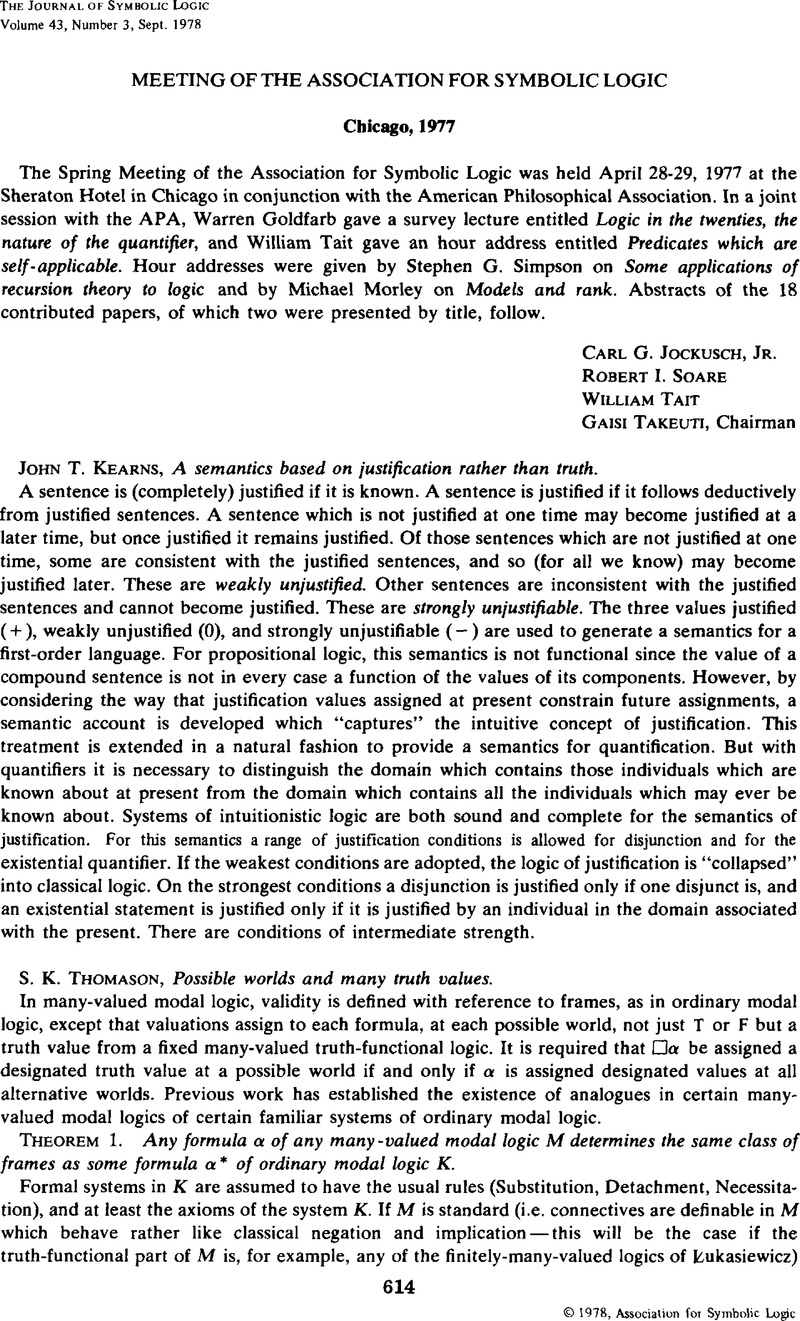No CrossRef data available.
Article contents
Meeting of the Association for Symbolic Logic, Chicago, 1977
Published online by Cambridge University Press: 12 March 2014
Abstract

- Type
- Meeting Report
- Information
- Copyright
- Copyright © Association for Symbolic Logic 1978


